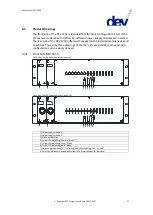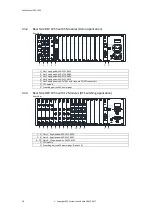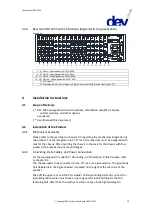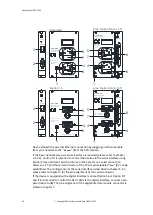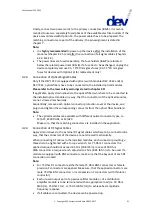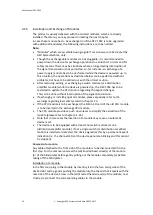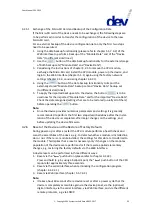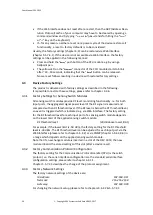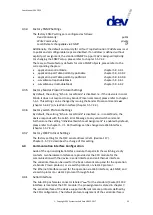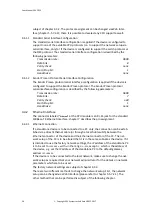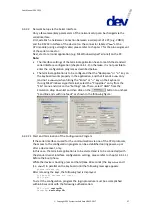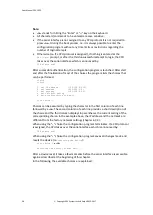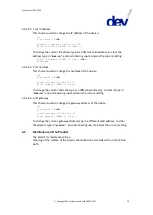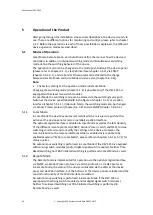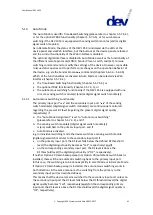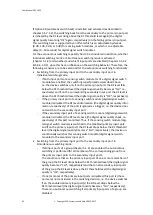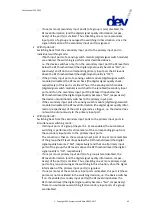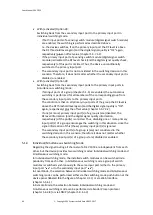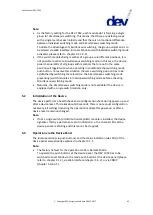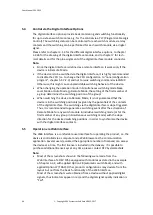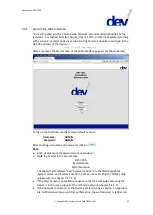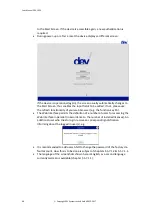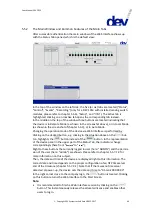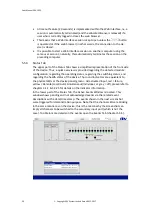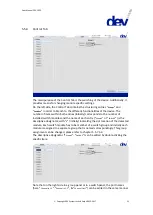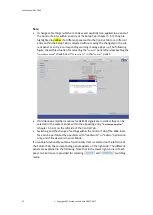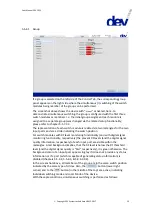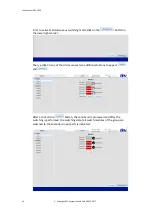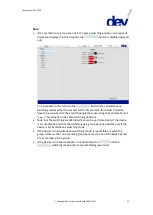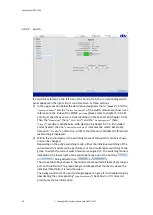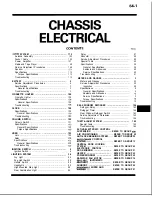
User Manual DEV 1953
Copyright DEV Systemtechnik GmbH 2015-2017
41
5.1.3
Auto Mode
The Auto Mode is used for Time Based Switching (please refer to chapter 5.5.7.3.4),
or for the optional TRAC functionality (chapter 5.5.7.3.5), or for autonomous
switching if the DEV 1953 is equipped with sensing switch modules (and/or digital
signal switch modules).
As in Remote Mode, the status of the DEV 1953 is indicated via the LEDs at the
device panel and via Web Interface, but the buttons at the device panel are locked
and the control functionality of the Web Interface is disabled.
The optional digital interface is disabled in Auto Mode as well as the functionality of
the different remote protocols (SNMP, Sandar Prosan, Leitch, and QEC) to issue
switching commands and to modify the settings of the device. However, is possible
to issue status queries and to perform some changes on the operation behavior of
the device, e.g. via the Sandar Prosan
PM
xy
commands (chapters 5.6.3.6…5.6.3.9).
Which of the functionalities is activated in Auto Mode can be selected via Web
Interface (chapter 5.5.7.3.2):
the Time Based Switching functionality (chapter 5.5.7.3.4); or
the optional TRAC functionality (chapter 5.5.7.3.5); or
the autonomous switching functionality if the DEV 1953 is equipped with one
or more sensing switch module(s) (and/or digital signal switch module(s)):
5.1.3.1
Autonomous Switching Functionality
The primary input port "
In A
" and the secondary input port "
In B
" of the sensing
switch module(s) (digital signal switch module(s)) are continuously monitored
regarding the present RF level (regarding the present digital signal quality,
respectively) if
a. the "Auto Mode Assignment" is set to "Autonomous Switching"
(please refer to chapter 5.5.7.3.2), and if
b. the sensing switch module(s) (digital signal switch module(s))
is (are) switched to the primary input port, and if
c. Auto Mode is activated.
E.g. in Individual switching mode the device switches a sensing switch module
(digital signal switch module) to the secondary input port if
on the primary input port, the RF level falls below the defined RF threshold
level (the digital signal quality becomes "Fail", respectively) and if
on the corresponding secondary input port, the RF level is above the
RF threshold level (the digital signal quality is "OK", respectively).
If neither Option 22 (main backup swap) nor Option 28 (automatic switch back) is
installed, there will be no automatic switching back to the primary input port.
In this case, the switching is to be done explicitly in Local Mode or in Remote Mode.
If Option 22 (main backup swap) is installed, the autonomous switching works in
both directions in the same manner as the switching from the primary to the
secondary input port (as described above).
This means that the device remains switched to the secondary input port unless on
the secondary input port the RF level falls below the RF threshold level (the digital
signal quality becomes "Fail", respectively) and if on the corresponding primary
input port the RF level is above the RF threshold level (the digital signal quality is
"OK", respectively).
Содержание 1953
Страница 128: ...User Manual DEV 1953 128 Copyright DEV Systemtechnik GmbH 2015 2017 5 9 4 4 surveillance ...
Страница 140: ...User Manual DEV 1953 140 Copyright DEV Systemtechnik GmbH 2015 2017 This Page Intentionally Left Blank ...
Страница 143: ...User Manual DEV 1953 Copyright DEV Systemtechnik GmbH 2015 2017 143 12 Notes ...

